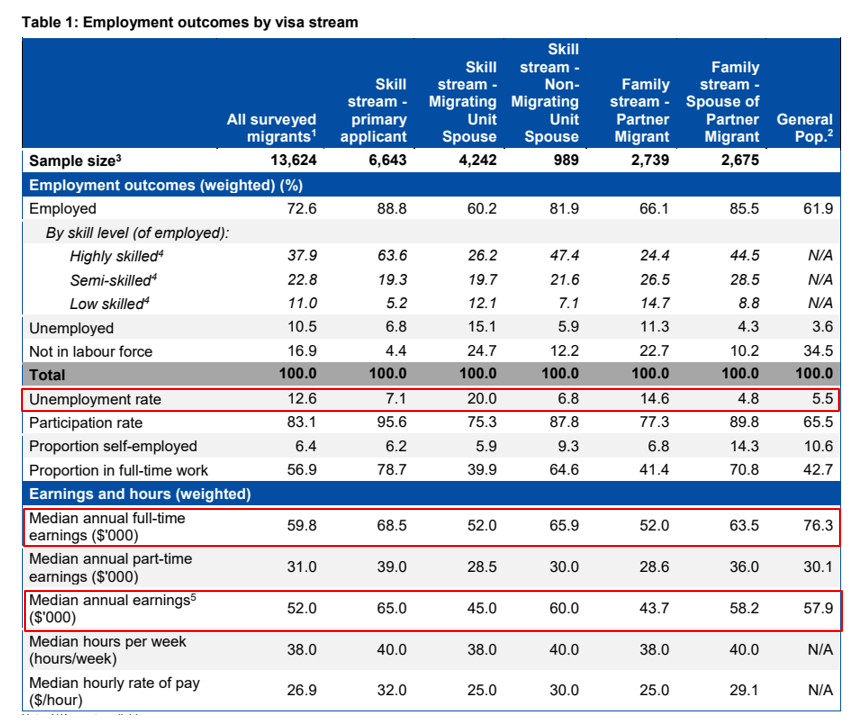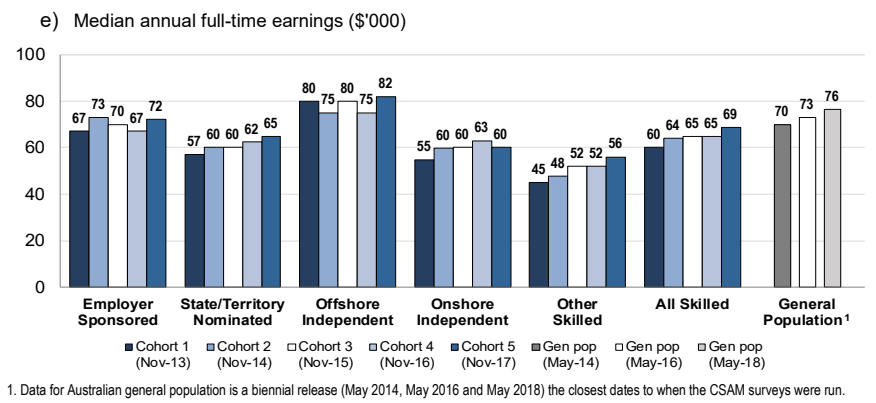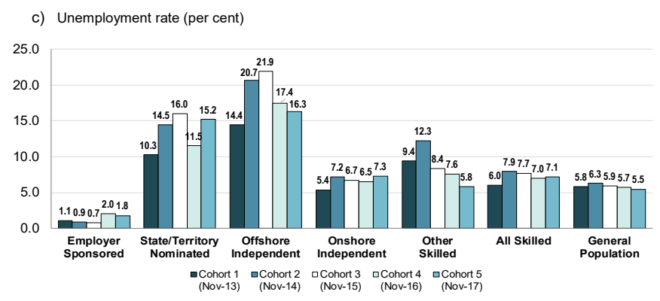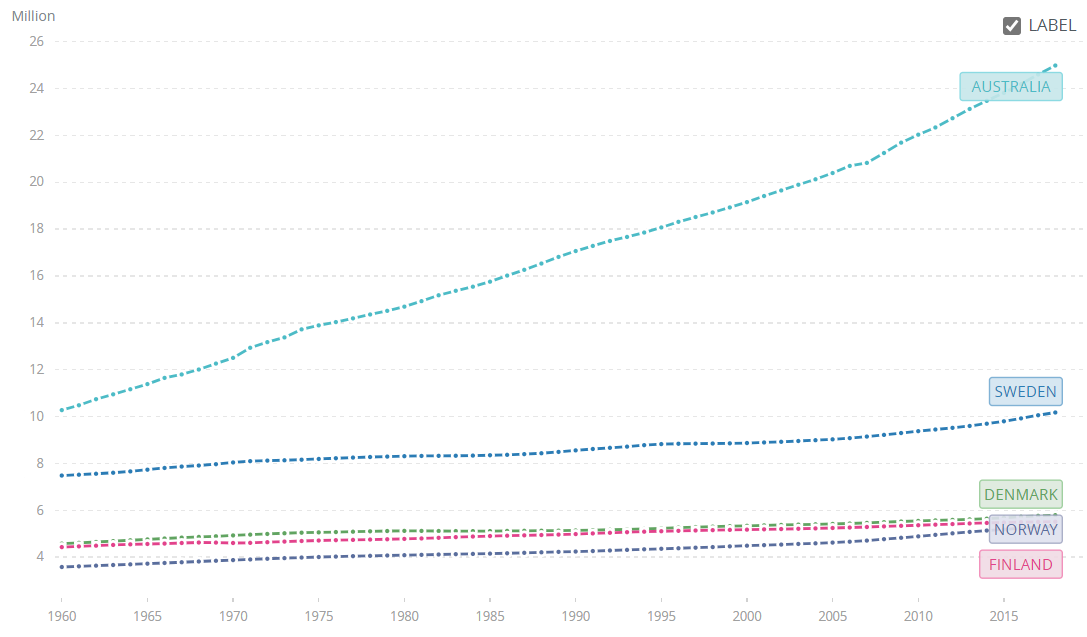Program director for the United States Studies Centre at the University of Sydney, Stephen Kirchner, has demanded that Australia emulate the post-World War II immigration policy of increasing population growth to help the economy recover from the COVID-19 pandemic:
“Restoring pre-pandemic levels of net overseas migration will be essential to economic recovery,” he said.
“The pandemic affords an opportunity to rethink the immigration policy and planning framework the federal government adopted prior to the pandemic.”
Dr Kirchner said the government should emulate the post-World War II immigration program…
Dr Kirchner said the cap on net migration should be dropped…
The prior 15 years of extreme net overseas migration (NOM) was unambiguously deleterious for Australia’s productivity and living standards.
It crush-loaded everything in sight: the labour market, roads, public transport, water supplies, schools, hospitals, open space, you name it. It also diluted Australia’s fixed mineral endowment among more people, lowering wealth per capita.
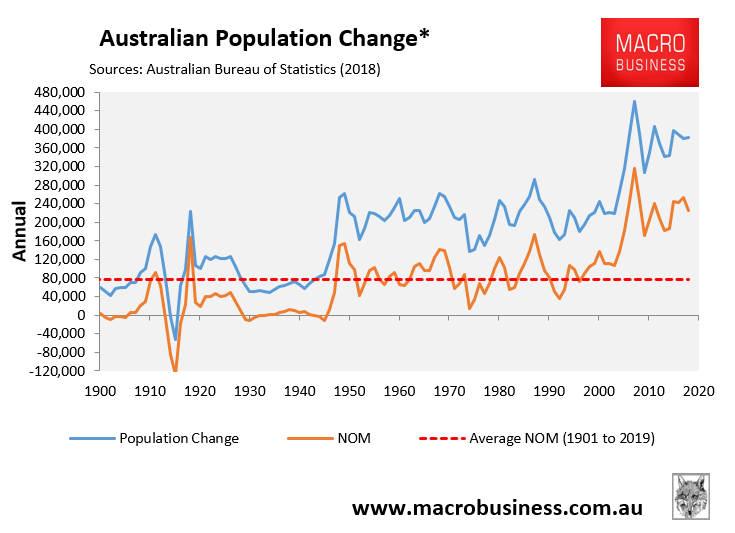
Ordinary Australian workers suffer most from the ‘Big Australia’ policy, as they are forced to compete harder for jobs from lower wage migrants, as well as paying more for basic essentials like housing.
On the first point – the labour market – consider the below empirical evidence from the Department of Home Affairs’ Continuous Survey of Migrants. This report shows that migrants have had significantly worse labour market outcomes than the general population:
In particular:
- The unemployment rate of surveyed migrants (12.6%) was more than double the general population (5.5%) in 2017;
- The median annual full-time earnings of migrants was $16,500 (22%) below the general population in 2017; and
- The median annual earnings of migrants was $5,900 (10.2%) below the general population in 2017.
Even focusing only on the skilled stream shows that both median earnings and unemployment are far worse than the general population:
So, according to the actual empirical data provided by the federal government, Australia’s mass immigration program unambiguously increased Australian unemployment, suppressed wages, and reduced average hours worked – all bad outcomes for the economy.
Therefore, returning to the Big Australia mass immigration policy will further damage Australia’s productivity and living standards going forward.
It’s easy to see why.
Allowing Australian firms to grab cheaper migrants instead of paying higher wages to local workers will necessarily discourage these firms from innovating and adopting labour saving technologies, which would boost the economy’s overall productivity. It would also prevent creative destruction by enabling low productivity firms to remain in business.
By contrast, stemming the flow of low-wage migrants would force the least productive firms to contract and go bust, transferring workers, land and capital to more productive businesses. In turn, this would raise average productivity across the economy. Moreover, all firms, observing higher wages, would invest more in labour saving technologies and restructure to lift productivity.
There is a reason why construction firms, farms and manufacturers in advanced nations usually involve a handful of workers operating heavy machinery, whereas in low-wage developing countries these are manned by many workers doing manual labour. The higher cost of labour in advanced countries forces these firms to invest in labour saving machinery, which lifts overall productivity.
Lower immigration will also reduce another major drag on Australia’s productivity: infrastructure bottlenecks and congestion. And it will improve Australia’s current account, since Australia would import far less and the nation’s immense mineral wealth (and primary exports) would be shared among less people.
On the last point – the current account – notice below how Australia’s two biggest migrant magnets of Sydney an Melbourne drove gigantic trade deficits?
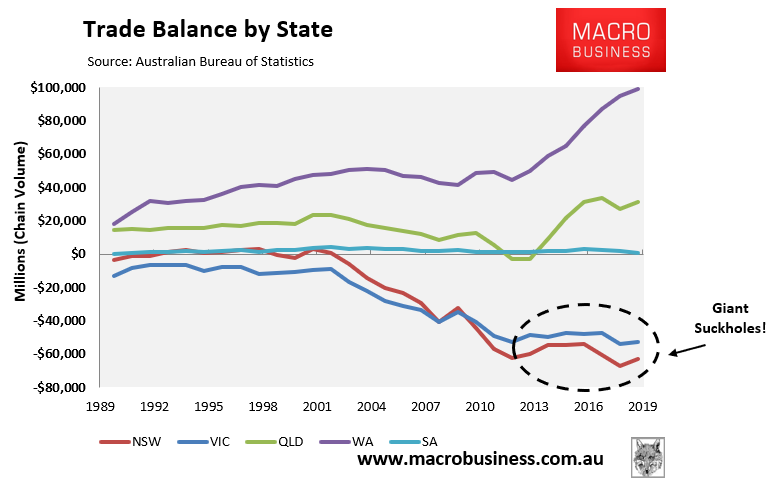
This is not a coincidence.
Essentially, all of the extra migrants that piled into these two cities over the past 15 years barely lifted exports, since these cities don’t actually produce much that is tradeable. By contrast, imports skyrocketed via more purchases of consumer goods like flat screen TVs, cars, furniture, etc. These net imports must be paid for, either by increasing the nation’s debt or by selling-off the nation’s assets. Australia has been doing both.
The fact is, running a mass immigration Big Australia policy promotes ‘dumb’ growth, concentrated in urbanisation and household debt, and associated sectors benefit (think Big Property, Big Retail and banking). It reduces liveability as it benefits a small number of elites over the many, thereby increasing inequality.
Therefore, restoring mass immigration post COVID will only further stifle productivity, worsen the unemployment queues and further depress wages, smashing Australia’s working class.
The mass immigration policy needs to be junked for the sake of productivity, liveability and equality. Instead, policies that focus on productivity enhancement and competitiveness should be the focus as they lower debt while boosting incomes per capita, and are more meritocratic.
On this front, Australia’s policy makers should follow the lead of the Nordic countries – Sweden, Denmark, Finland and Norway. They are renowned as being among the wealthiest, happiest, best functioning nations in the world with the highest living standards. They also achieved this success without mass immigration-driven population growth:
The world has 7.6 billion people. Australia doesn’t need to import them to sell to them. This is not what clever countries do.

